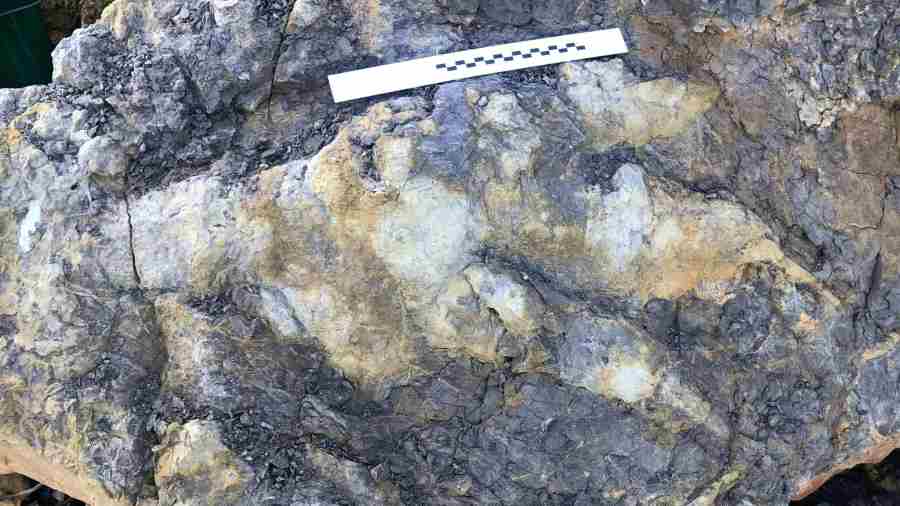Sun 19 February 2023:
A massive dinosaur footprint which is said to be made by a possibly squatting or resting dinosaur some 166 million years ago, was found off the coast of the United Kingdom’s Yorkshire. The discovery was made last year by local archaeologist Marie Woods as she stumbled upon the more than three feet long (80 centimetres), three-toed footprint which is the largest of its kind found in east Yorkshire county which is also known as the “Dinosaur Coast”. The findings of the discovery were published in the journal of Proceedings of the Yorkshire Geological Society on Thursday.

The now co-author of the study stumbled upon the fossil in April 2021 at Burniston Bay, about five kilometres north of Scarborough in the UK. Subsequently, she contacted her friend Dr Dean Lomax, a palaeontologist at The University of Manchester and the co-author of the new paper, who as per CNN initially thought that Woods was joking.
The author of the ‘Dinosaurs of the British Isles’ called it a “wonderful find” and in a statement said, “Not only does this specimen represent the largest theropod footprint found in Yorkshire, but by studying the angle of the footprint, its shape, and the impressions of the claws, the fossil provides insights into the behaviour of this individual from around 166 million years ago.”
He added, “In fact, features of the footprint may even suggest that this large predator was squatting down before standing up. It’s fun to think this dinosaur might well have been strolling along a muddy coastal plain one lazy Sunday afternoon in the Jurassic.” After the discovery, the duo moved quickly to secure the Jurassic Period specimen and along with three fossil collectors carefully transported it to the Scarborough Museum and Galleries.
The specimen was donated to the aforementioned museum by Woods and a “local fossil hunter” as well as the co-author of the new study, Rob Taylor. Notably, the fossil hunter in light of the discovery, realised that he had actually spotted the tracks five months earlier, however, since it was not completely exposed at the time, the full extent and importance of the footprint went unnoticed.
“This is only the sixth specimen of this type recorded from the Cleveland Basin since they were first discovered in 1934”, the authors noted in the recently published paper. The researchers also believe that the footprint belongs to a carnivorous Megalosaurus-like creature which was at least 8.2 to 9.8 feet tall at the hips, said lead author and geologist John Hudson. The study also attributed the “elongated metapodium” (rear section of the dinosaur’s foot) to a crouching or resting behaviour.
“This important discovery adds further evidence that meat-eating giants once roamed this area during the Jurassic,” said Hudson. According to Lomax, named in 1824, Megalosaurus was the world’s first official dinosaur after its bones were discovered in England’s Oxfordshire county. The dinosaur was also reportedly one of the largest predators of its time with a large skull, sharp teeth, and at least 26.2 to 29.5 feet in length.
NEWS AGENCIES
___________________________________________________________________________________________________________________________________
FOLLOW INDEPENDENT PRESS:
TWITTER (CLICK HERE)
https://twitter.com/IpIndependent
FACEBOOK (CLICK HERE)
https://web.facebook.com/ipindependent
Think your friends would be interested? Share this story!





